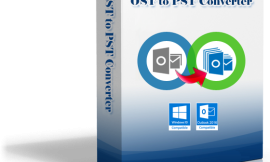Global osteoporosis treatment market is projected to witness a CAGR of 4.75% during the forecast period 2024-2031, growing from USD 14.79 billion in 2023 to USD 21.44 billion in 2031. The osteoporosis treatment market is poised for future growth due to the increasing disease burden of osteoporosis treatment, the aging population, and ongoing drug development and approval activities in the field.
Osteoporosis is a bone disease characterized by decreased bone density and increased fracture risk. Treatment approaches include lifestyle modifications (diet, exercise), medications (bisphosphonates, hormone therapies, and monoclonal antibodies), and supplements (calcium, vitamin D) to strengthen bones and reduce fracture risk. The market for osteoporosis drugs is anticipated to thrive under the influence of rising osteoporosis cases globally and improved treatment options available for osteoporotic patients. Several initiatives from the government and other stakeholders further strengthen the growth rate in the market. Recent trends include a focus on personalized medicine, combining pharmacological treatments with lifestyle modifications like nutrition and exercise. Innovations in drug delivery systems and ongoing research into new therapeutic agents are expected to enhance market growth further. Challenges such as treatment adherence and side effects persist, underscoring the need for ongoing patient education and support. The osteoporosis treatment market is poised for growth, fueled by demographic shifts and advancements in medical research and technology.
For instance, in August 2024, the National Institute for Health and Care Excellence (NICE), London, recommended abaloparatide as a new treatment option for osteoporosis in postmenopausal women at very high fracture risk, benefiting over 14,000 individuals. This drug, marketed as Eladynos by Theramex HQ UK Limited, enhances bone density by stimulating bone formation. It serves as an alternative for those who do not respond to or tolerate standard treatments.
Rising Prevalence of Osteoporosis and Improved Treatment Options to Boost Market Demand
The major driving factor of the osteoporosis treatment market has been the increase in the incidence of the disease among the elderly. The greater recognition of the condition has led to more patients seeking effective therapy to prevent fractures and allow the bones to become healthy again. In addition, improved treatment options, such as the introduction of bisphosphonates, hormone therapies, and newer biologics, reinforce the increased demand for these products. More attention from healthcare providers and organizations toward early diagnosis and preventive care is motivating patients to seek treatment. Personalized medicine further increases the appeal of osteoporosis therapies that are treated uniquely for every patient. With the increasing number of the aging population and the related risk of osteoporosis, the treatment for osteoporosis has become a rapidly growing and potential market. With the rising emphasis on bone health, the promising area for effective and innovative osteoporotic therapy will increase even further, pointing out the clear priority for pharmaceutical companies. According to the International Osteoporosis Foundation, osteoporosis affects approximately 6.3% of men over the age of 50 and 21.2% of women over the same age range globally, and 37 million fragility fractures occur annually in osteoporosis patients aged over 55.
Government Initiatives for Osteoporosis Treatment Drive Market Growth
Government-led programs and policies support the osteoporosis treatment market growth. Public health education programs enhance awareness about disease and its risk factors. A variety of updated guidelines on routine screening that facilitate early diagnosis and timely interventions for postmenopausal women and older adults further boost the demand for treatment. Furthermore, public funding for research on the disease also pushes the discovery of novel treatments and developments in existing treatments, encouraging pharmaceutical firms to invest in this area. Coordination between government health departments and healthcare providers will be improved education and training, improving the treatment of osteoporosis, and patient compliance with treatment. Improved policies that increase reimbursement for the treatment of osteoporosis enhance access to care and encourage more patients to seek care. For instance, in July 2024, The Centers for Medicare & Medicaid Services (CMS) proposed a 2025 Physician Fee Schedule aimed at enhancing post-fracture care for the 10 million Americans with osteoporosis. This initiative, supported by various health organizations, seeks to incentivize better care and reduce the rising costs associated with osteoporotic fractures, projected to reach USD 95 billion by 2040. Key changes include new coding for fracture management and a call for public comment to improve evidence-based care access, particularly for disproportionately affected women.
Bisphosphonate Segment to Dominate Market
The bisphosphonate class of drugs is anticipated to dominate the osteoporosis treatment market because drugs like alendronate and risedronate have proven to have an established efficacy in reducing fracture risk and, therefore, are trusted by clinicians. Other bisphosphonates are also available as generic equivalents, making them more accessible and adaptable. More often, bisphosphonates are highly regulated under clinical guidelines, and therefore, their regulated use among healthcare providers is ensured. They also tend to have a more benign safety profile compared with other newer treatments, together with a longer duration of action that permits less frequent dosing, thereby improving compliance in the patient. Ongoing studies concerning their long-term effect also help to support their clinical use further and thus remain an integral part of treatment protocols.
For instance, in March 2024, Sandoz Group AG received FDA approval for two biosimilars, Jubbonti and Wyost, targeting Amgen Inc.’s denosumab, a key treatment for osteoporosis. Jubbonti will compete with Prolia, aimed at high-risk osteoporotic men and postmenopausal women, and is also indicated for glucocorticoid-induced osteoporosis. Wyost will challenge Xgeva, which is used to prevent skeletal-related events in cancer patients. Both biosimilars have interchangeable status, allowing easy substitution without prescription changes. While this development promises improved access to essential osteoporosis treatments, Sandoz has not disclosed launch dates or pricing due to ongoing patent litigation.
North America Dominates Osteoporosis Treatment Market
The North America osteoporosis treatment market is important, as the population in this market is more aged, which leads to a greater incidence of osteoporosis and related fractures. Moreover, increased awareness of the disease by healthcare providers and patients has led to increased testing, evaluation, and treatment, which has driven this burgeoning market. Advances in healthcare infrastructure in the region provide easy access to the latest medical technologies, thus making the development and distribution of effective treatments for osteoporosis easier. Insurance coverage and reimbursement policies are other key factors driving the market. Some health insurance covers osteoporosis medications for many patients, hence increasing adherence to the treatment. Regulatory agencies, like the USFDA, ensure new therapies are placed under an adequate check, ensuring more confidence in treatment safety and efficacy.
For instance, in February 2024, the USFDA added a Boxed Warning to Prolia (denosumab), indicating an increased risk of severe hypocalcemia in patients with advanced chronic kidney disease (CKD), particularly those on dialysis. This risk is heightened in patients with CKD-mineral and bone disorders. The warning aims to ensure proper patient selection and monitoring, as severe hypocalcemia can lead to serious health complications, including hospitalization and death.
Future Market Scenario (2024-2031F)
Bone-targeting nanoparticles represent a groundbreaking advancement in the treatment of osteoporosis by increasing drug delivery specifically to bone tissue. Traditional osteoporosis medications often suffer from low targeting specificity, leading to systemic toxicity and reduced efficacy. In contrast, these nanoparticles can be engineered to recognize and bind to bone tissue, ensuring that therapeutic agents are delivered precisely where needed. The nanoparticles can encapsulate various therapeutic agents, including growth factors and nucleic acids, improving their bioavailability and stability. Their small size allows for better penetration into biological barriers, while modifications can enhance their affinity for bone surfaces. For instance, lipid nanocarriers and exosomes have shown promise in delivering anti-osteoporotic agents directly to osteoblasts, promoting bone formation and inhibiting osteoclast activity. This targeted approach minimizes side effects and maximizes therapeutic outcomes, paving the way for more effective osteoporosis treatments in the future.
Click :
Report Scope
“Osteoporosis Treatment Market Assessment, Opportunities and Forecast, 2017-2031F”, is a comprehensive report by Markets and Data, providing in-depth analysis and qualitative and quantitative assessment of the current state of global osteoporosis treatment market, industry dynamics, and challenges. The report includes market size, segmental shares, growth trends, opportunities, and forecast between 2024 and 2031. Additionally, the report profiles the leading players in the industry, mentioning their respective market share, business models, competitive intelligence, etc.
About Us:
Markets and Data provides a comprehensive/ panoramic understanding of markets at global, regional, and country levels. Examine changing consumer preferences, emerging challenges, underlying trends, and growth prospects to accelerate your business strategies.
Contact
Mr. Vivek Gupta
5741 Cleveland street,
Suite 120, VA beach, VA, USA 23462
Tel: +1 (757) 343-3258
Email: [email protected]
Website: https://www.marketsandata.com





